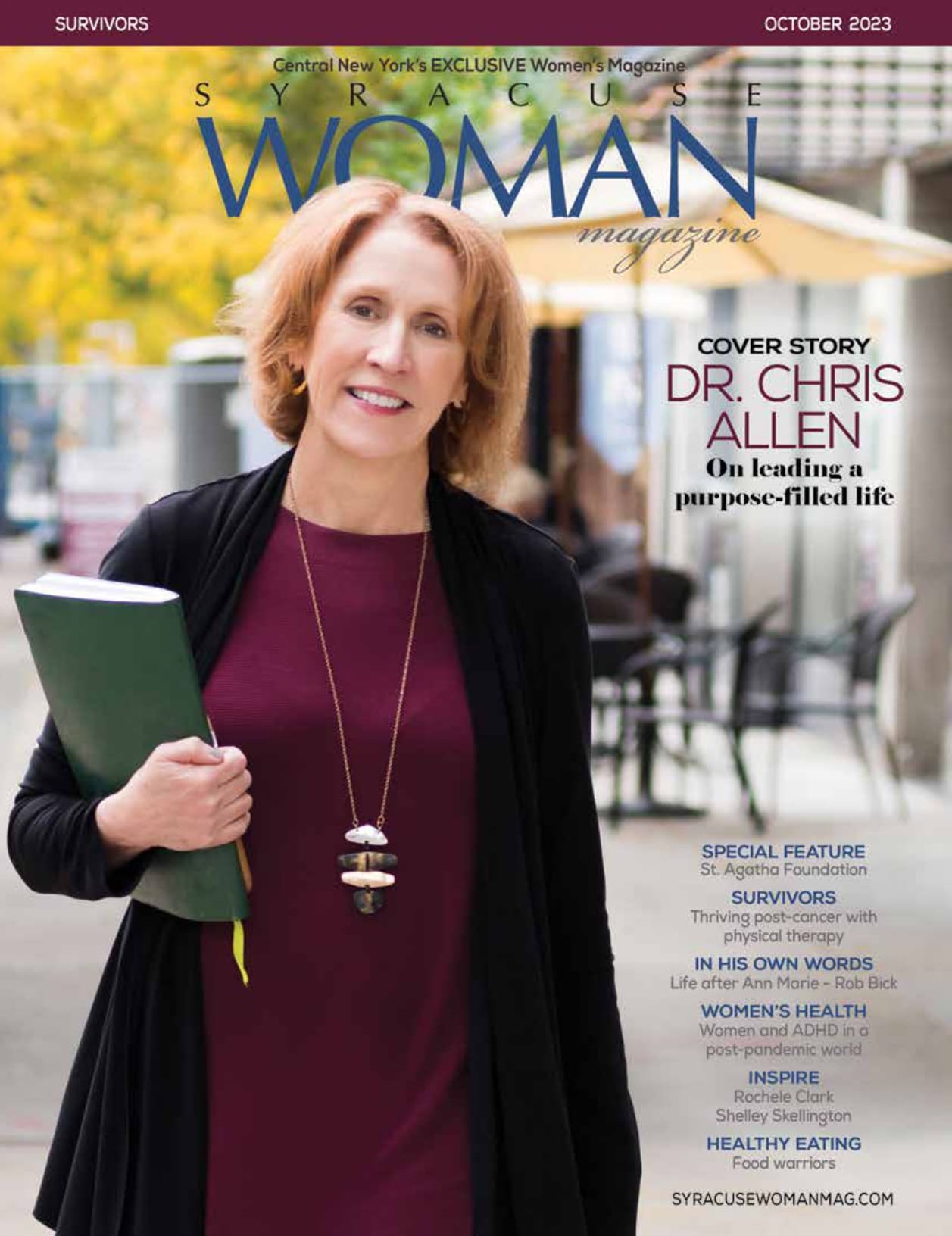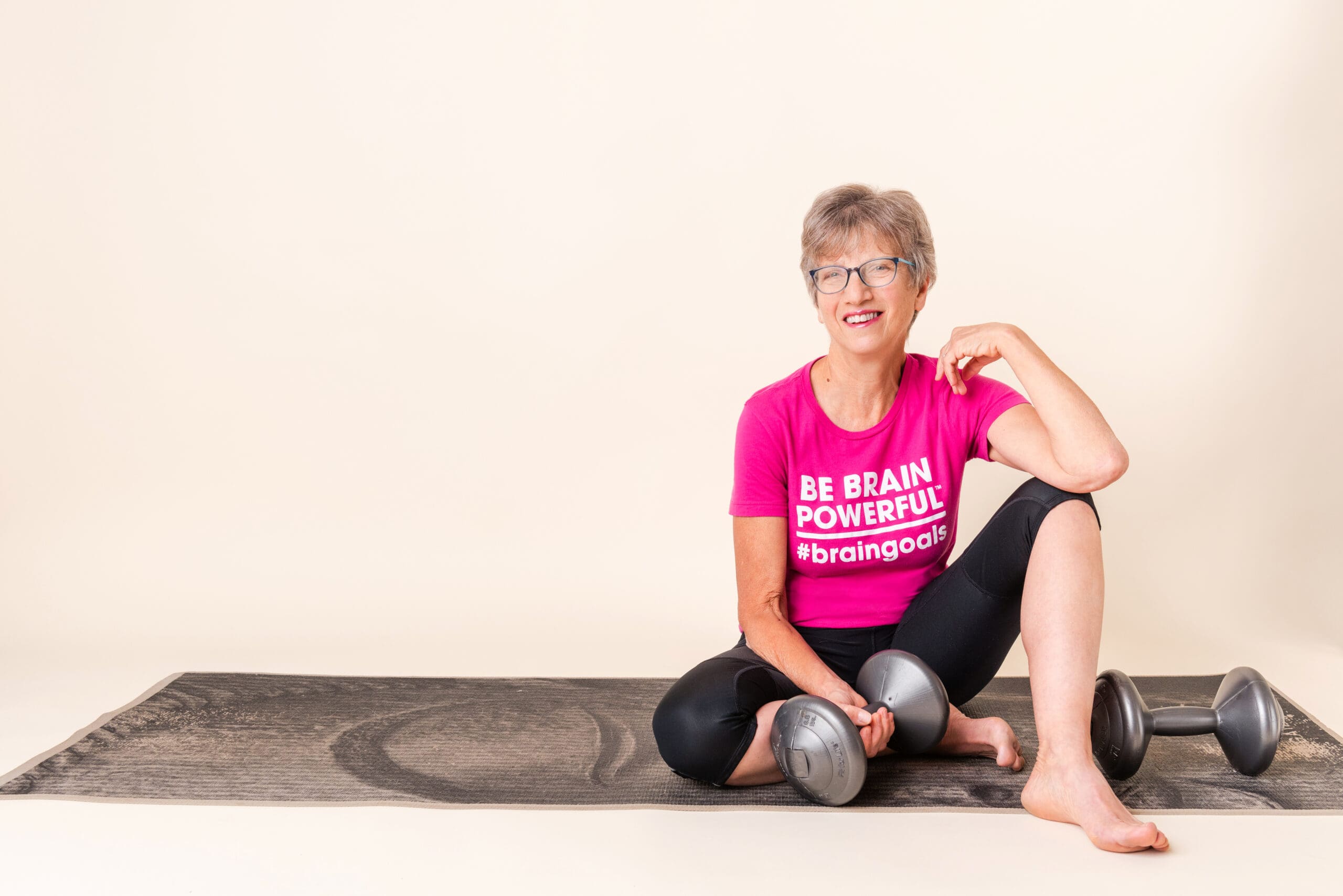“No one, no heart, is immune to the adversities of life.”
-Lee Harris, author of Energy Speaks
By Kate Hanzalik
If you’re living with depression, you’re not alone. It’s one of the most common mental health conditions in the United States. Over 8 percent of all U.S. adults have experienced at least one major depressive episode. If you’re seeking treatment such as psychotherapy and prescriptions, there’s a chance that you’re one of many people who don’t respond to treatment. While many therapists point out that prescriptions can be a wonderful tool, some therapists are adding to their toolbox with alternative therapies.
In Syracuse, two women combine innovation with ancient practices to heal the people who’ve turned to them for help. Diamond Marie, PsyD, a licensed mental health counselor and chief transformational officer of Thaxton Therapy, offers transformational therapy. Lola Alao, NP, co-owner of TMS Restoration Psychiatry, offers transcranial magnetic stimulation (TMS) and prayer therapy. Their approaches are successful – they’ve helped many people to become happier and healthier. But part of what makes Marie and Alao’s impact so inspiring is that they’re using some of their own methods to heal themselves.


Transformational Therapy
Diamond Marie wakes in the morning with a routine – get her son to school, get ready to see clients, host a webinar, and work on content creation for her business, Thaxton Therapy. Sure, this routine may be straightforward, but taking a closer look into her past, Marie’s day-to-day life is the culmination of a lot of trauma and personal growth.
“I’m from the inner city of Syracuse, southside to be exact. I grew up always knowing something was off with me but wasn’t ever sure what that was,” she said. “Being a young girl of color in poverty I had very low self-worth. I aspired to be a medical doctor thinking that with that title I’d finally be seen as valuable and respected. After a long road in college, I stumbled into mental health counseling completing my masters and doctorate and became a licensed mental health counselor.”
Marie was living in what she describes as “a dark period.” She was diagnosed with borderline personality disorder [BPD] that worsened after the death of her husband in 2018. “I didn’t want to live. I wanted another life. I was all over the place,” she said. “After finishing my studies, seeing a therapist, and learning to really love myself, I was finally in recovery. I also met my current partner who was patient enough to see the best in me while I self-sabotaged for a while.”
She recognized the strength in her struggle. “One thing I really did appreciate about an element of my BPD was my empathy and being in sync with others. I missed that connection.”
As Marie was helping others, her recovery helped her to become more energetic, to vibrate at a higher level, so to speak. But something was missing–she longed for a transformational experience, so she turned to spirituality.
Chakras are like pinwheels, energy centers in the body that spin at the speed of light, explains anatomist Ray Long, MD. We might not be able to see them on an fMRI, but, as expert James Van Praagh notes, they’re there receiving, transmitting, and processing the world around us. When life gets us down, it’s likely that at least one of our chakras is blocked. When they open again, we can feel more joyful, empowered, and alive.
For Marie, she opened her third eye chakra, which helps us to see life more clearly, if not clairvoyantly. This opening took her abilities as a therapist to the next level. She said, “One of my catchphrases is ‘I see what others can’t see about themselves.’ This is my third eye. I help people to still see, acknowledge, and love the messy version of themselves. Only true healing can happen after that is done.”
As part of her healing journey, Marie underwent treatment with ketamine, a compound that, according to Nature Journal, is proven to reduce depression in days rather than months like antidepressants, and it is also shown to help people with bi-polar disorder and PTSD. During treatment, ketamine can create a dissociative effect that causes a person to see themselves and their environment in a different light, which has many benefits.
Marie explained, “Ketamine and psychedelics allow you to dissociate in a good therapeutic way. Instead of escaping because things are too much, you can have a higher, bird’s eye perspective on what you are going through.” Her transformation made her “able to learn to be in tune with the universe and really tap into my spirituality,” she said.
Along with clinical therapy and life coaching, Marie offers ketamine therapy. She partners with Captivate, which delivers ketamine to her clients, then she provides therapy after the treatment. “I’m a therapist who follows the science, but I also follow the heart.”

TMS and Prayer Therapy
Lola Alao, NP, follows the science with TMS. It’s a noninvasive procedure where magnetic pulses are used over the course of several weeks to stimulate a patient’s nerve cells in their prefrontal cortex, the region of the brain responsible for mood and depression. The treatment is also FDA approved for obsessive-compulsive disorder, anxious depression, and smoking cessation. According to Clinical TMS Society, studies show that 60 percent of patients respond well to treatment.
“It takes time, it builds up,” Alao said. “When they start [the treatment], you can still see the symptoms are there. But by the time they get to between three to four weeks, we start noticing. Initially the first thing they will start talking about is [relief from] insomnia. . . [And] some people tell me, ‘Lola, I can smile again.’”
One patient told her, “Lola, at least I don’t want to kill myself anymore.”
“People who don’t even shower, we start seeing them really changing their hygiene going to the next level because they have more interest and desire,” she said. “They can see themselves, and notice. So it’s just been [a] breakthrough for psychiatry.”
Alao also follows her heart. She uses prayer therapy for those who request it, which seems to have rapid results. “Over the years I have seen a lot of patients that are faith-based patients. So they are looking for something more and they have been asking and requesting me to pray with them. . . And I will pray with them . . . and they will leave hopeful and relieved.”
A patient who was so panic-stricken that he could not sit in a chair asked her, “What do I do?” She said, “I prayed for peace over him and he calmed down.” On a scale of 1-10, he said his panic score was a 20. After the prayer therapy, he said it was a 4. “I still don’t understand how he used me, but I know there is something from me, which is relief and hope.” Even if you are not faith-based, prayer therapy is for everybody, Alao said.
She first discovered the power of prayer therapy for her patients when she worked at the Ghali Clinic in Syracuse. “[The patients] were finishing their medication. . . and they would tell me they are still struggling, I’m like, ‘We’re already at the very top of where you need to go with medication’ . . . We would just pray and they would feel better. I was like, okay there is something going on here. So that led me to open my own clinic.”
Eventually, after opening her own clinic, she and her husband, a psychiatrist, opened TMS Restoration Psychiatry where they work together to offer TMS, medication, and prayer therapy.
Alao knows how well prayer has worked in her own life. “Faith has actually sustained me to where I am right now. It’s been really difficult. I lost a senior sister, lost a junior brother, and, you know, life happens to everybody. But it gives me hope to keep moving, and that there are better days ahead.”
If you’re interested in learning more about TMS, please visit www.clinicaltmssociety.org. To learn more about Lola Alao and TMS Restoration Psychiatry, visit tmspsychiatry.org. More information about Diamond Marie and Thaxton Therapy can be found at thaxtontherapy.com.






You must be logged in to post a comment.